Black Disney Imagineer Lanny Smoot reflects on inspiring path to hall of fame recognition
Lanny Smoot remembers watching “Mission Impossible” in the 1960s, where actor Greg Morris played Barney Collier.
His character was an engineer who always used technology to save the day but was never credited, Smoot told USA TODAY.
“Somehow, that guy is what I want to be,” Smoot thought at the time. “He knew all the technologies that could save the day for the entire team. He knew electronics. He knew the physics of things and flying things. In some sense, that was my role model.”
Now, as a Black engineer himself, Smoot wants to be a role model for others. He is a Disney Research Fellow and a Disney Imagineer, helping to develop ideas for the Walt Disney Company and its theme parks, attractions, cruise ships and more.
Smoot has 106 patents and earned his 100th career patent in 2021, a first for anyone at Disney. He said 74 of them were created during his time with the company. Smoot said one of his favorite inventions is his live-action, extendable lightsaber.
Because of his technological feats, the National Inventors Hall of Fame will recognize Smoot and other 2024 inductees in May. It’s an honor Walt Disney himself achieved when he was inducted in 2000.
Smoot is honored to be part of this year's induction ceremony and said he wants to inspire young people, especially young Black engineers in the making who look like him.
“I can be a role model that inspires young kids of all races, but especially folks who usually don't see role models as much, to go into the fields that interest them in technologies and the sciences,” he told USA TODAY.
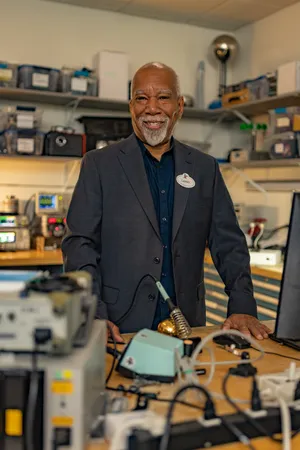
Lanny Smoot's thirst to create was fostered at an early age
Smoot said his love for inventing began when he was very young. He grew up in Brooklyn and he was about 5 years old when his father brought home a bell, a battery, wires and a light bulb.
“He got the bell to ring and he got that light bulb to light,” Smoot recalled. “I was amazed. It just lit my entire career up. I was so excited by electricity and electronics, it became a lifelong interest to me.”
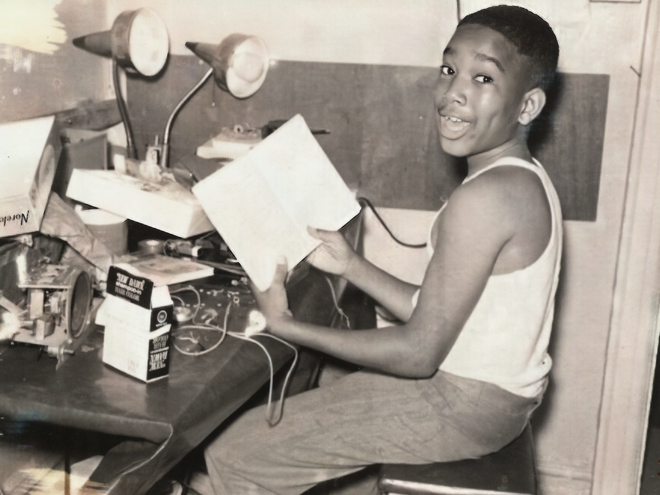
From that point on, he was at every science fair, entered competitions and was always eager to raise his hand when teachers posed a science question, he said.
His mother was also part of his support system, Smoot said.
“By the time I was 8, she had no idea what this science thing was,” he recalled, adding that she pushed him to keep going regardless.
He planned to go to George Westinghouse High School but pivoted after a life-altering conversation with a guidance counselor.
“You're not going to go to George Westinghouse,” the counselor told him. “You're going to go to Brooklyn Tech.”
The counselor told him that if he went to Westinghouse, he’d be just fine, become an electrician and make a nice life for himself. However, the counselor saw more for Smoot. Instead, the counselor pushed him to go to Brooklyn Technical High School to become an electrical engineer.
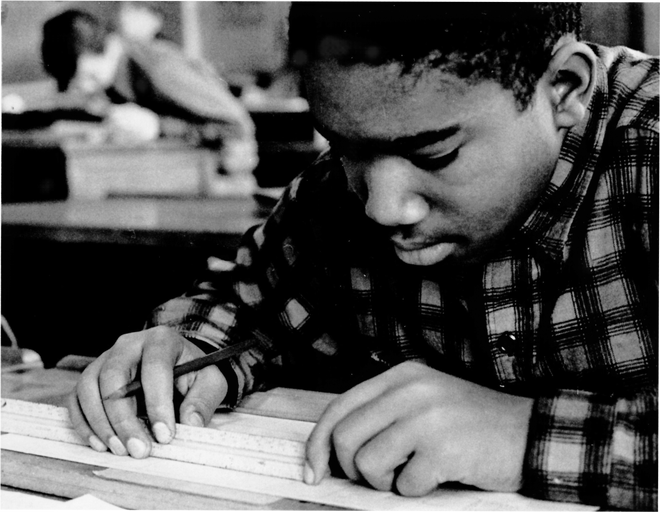
He eventually graduated from Brooklyn Tech and earned a full scholarship to complete his bachelor’s and master’s degrees in electrical engineering at Columbia University. He later worked at Bellcore.
His mother’s support continued after he started his professional career and during his employment at Bellcore, he took his mom to his job to show her the work that had captured his attention long ago. While there, he asked his mother if she understood his work.
“Yes, I do,” his mother said. “When you were smaller, you had small toys. Now, you have much bigger toys.”
She nailed it, he said.
Black History Month:AMC Theatres offer $5 tickets to fan favorites to celebrate
Disney sought after Lanny Smoot once he created camera prototype
Smoot started working at Bell Labs in 1978, then went to Bellcore, where he created the first high-quality, large-screen video teleconferencing system called the “VideoWindow,” the National Inventors Hall of Fame reported.
It wasn’t until 1998 that Disney was on Smoot’s radar. That’s when Disney representatives got wind of an “Electronic Panning Camera” prototype he created, which allowed users to move cameras at remote sites and adjust their view.
Disney execs wanted him to manage the company’s research department on Long Island, New York. He accepted the job and he later moved to California with the rest of the group.
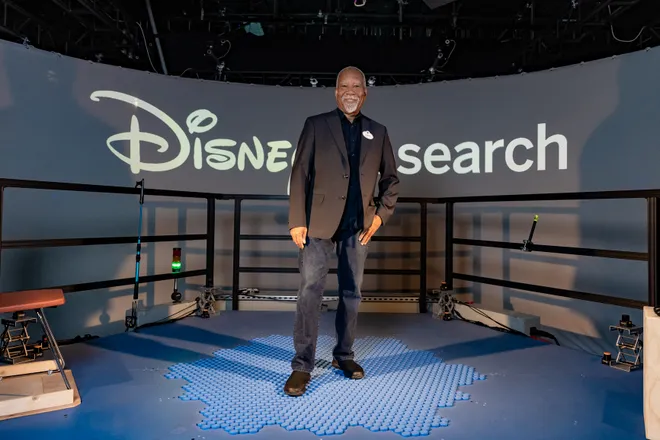
Lanny Smoot says becoming an engineer as a minority was challenging
Smoot said becoming an engineer wasn’t easy. He grew up in “a pretty tough neighborhood” and his family didn’t have a lot of income.
His parents went to high school but their education stopped there, he said.
And although he knew he wanted to build electronics, he didn’t know many people who shared his interests, nor did he know how he’d get where he wanted to be.
“There was no internet at that time,” he said. “There were no ways of finding out about other people that might be doing this … I had never seen a Black engineer until I almost was one. I didn’t have the role models that many people might have had if their parents were engineers.”
Another challenge he faced was having limited resources, Smoot said.
“Not having the resources to buy a science kit, I'm making my science kit out of things I can find,” he said. “Not being able to buy electronics parts but pulling them out of old TVs and out of old radios.”
It forced him to be more resourceful though, even today. He is now able to build things with small amounts of supplies and money, he said.
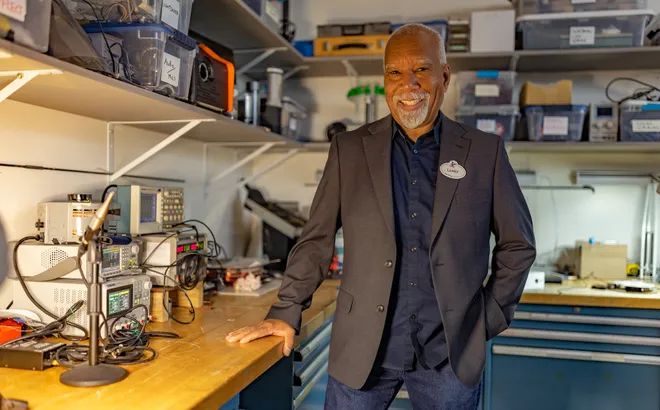
Lanny Smoot details problem-solving as a key part of being an inventor
Smoot said a huge part of his inventive process is learning as much as he can. He does his homework to discover all that there is to know surrounding the topic at hand.
Once he sets his mind to it, he ponders over it during his daily life.
“I'll draw up images of improvements and usually it will come to me that ‘Hey, this is a much better way of doing the thing that might be done now, or it's a completely new thing that people haven't thought about,’” he said.
He also encourages young inventors to draw diagrams or make models.
Smoot is thrilled about his latest invention, called the HoloTile floor. It’s a mechanical system that allows multiple users to walk on it at the same time in whatever direction they choose.
“I think it might be the solution to the virtual reality problem where you can have a virtual reality helmet on and be pretty happy but when you trip over the rug in your bedroom or something, that's the end of your experience,” he said.
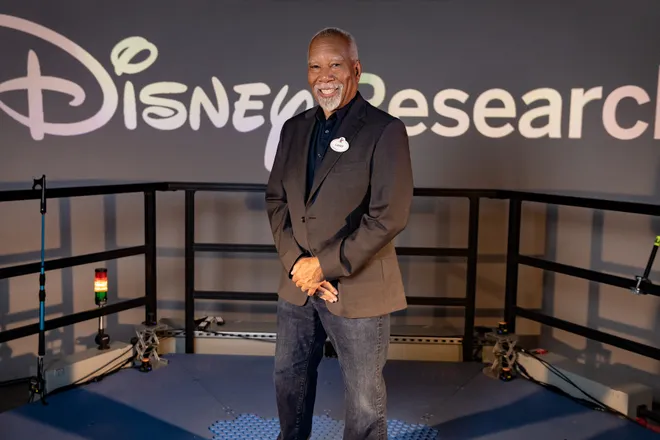
The multi-user experience allows virtual reality players to walk anywhere, including with friends.
“Your friend walks away and you see them as an avatar in the distance, like they're a mile away but they're right here, like two feet over,” he said.
What Smoot does, he said, is take concepts from his intelligent, artistic, creative coworkers and makes them real.
“People who are architects and sculptors and game designers, I can bring their dreams to life by adding the technology that they may not have,” he said.
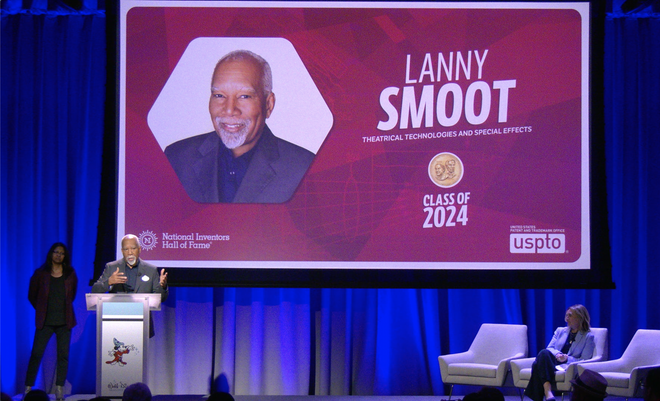
Lanny Smoot talks importance of creativity
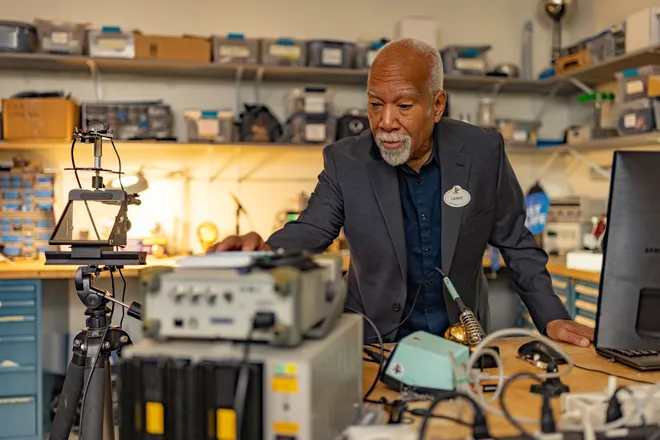
Smoot said he has strayed from simply taking things apart and learning how they work. Instead, he reads as much as he can about what makes things work and uses those parts to make something new.
“Creativity is … making something as opposed to just pulling something apart," he said. "The most creative folks are always putting things together.”
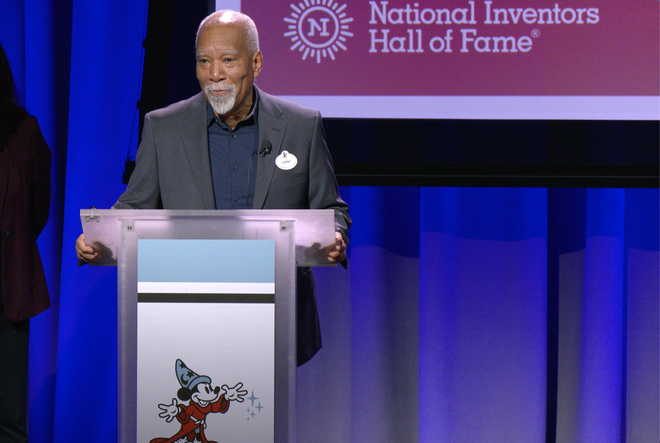
And for parents, he said it’s vital that they expose their kids to as much as possible. Take children to museums. Teach them about science and history, he said.
“Allow them to become themselves by nourishing their goals,” he said, encouraging young people to do what they love unapologetically.
“It's not a guilty pleasure,” Smoot said. “It's going to be your career. I feel sorry for the people who go to work and say ‘I hate the job. I hate this.’ That's the result of not doing what you love to do.”

Saleen Martin is a reporter on USA TODAY's NOW team. She is from Norfolk, Virginia – the 757. Follow her on Twitter at @SaleenMartin or email her at sdmartin@usatoday.com.
Disclaimer: The copyright of this article belongs to the original author. Reposting this article is solely for the purpose of information dissemination and does not constitute any investment advice. If there is any infringement, please contact us immediately. We will make corrections or deletions as necessary. Thank you.







